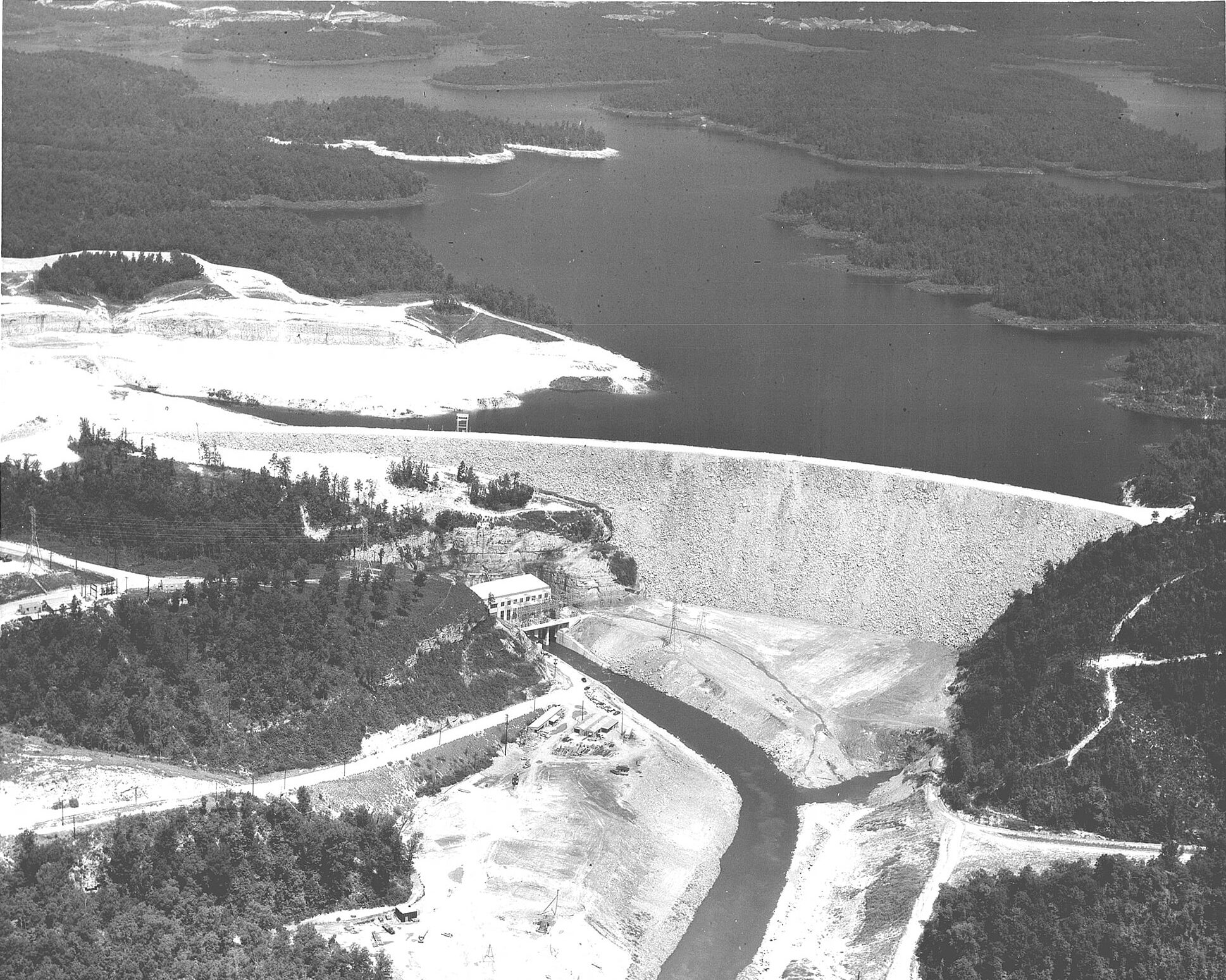Lewis Smith Lake, commonly known as Smith Lake, is a favorite local getaway for thousands of Alabamians. With a convenient location and over 500 miles of shoreline, it is considered by many as a prime destination. Known primarily for its deep waters, reaching a startling depth of 264 feet, the lake is also a hotspot for amateur and professional fishermen.
Though Smith Lake is a beloved destination for thousands, beneath the impressive depths lie haunting remnants of the past.
The Origin of Smith Lake
According to Alabama Heritage, the origin of Smith Lake is quite a simple story, “In 1954, a lake and dam were initially proposed to produce hydroelectric power for the Alabama Power Company. The dam would also provide a source of drinking water. The site of the Sipsey Fork to the Black Warrior River was chosen for its depth and strategic location.”

(Cheryl Preiss Taylor/Facebook)
Concerns quickly grew about the new project and spread across communities. Construction of the lake would lead to the loss of local farmland and structures and would require the reinterment of many bodies from local gravesites. Natural features of the land such as Clear Creek Falls, a nearby waterfall considered one of the largest in the state, would be lost to the flood.
Saying Goodbye
In an article by The Cullman Times entitled “More than 50 years later, residents recall birth of Smith Lake“, local Lorene Bailey recalls the experience of looking out over the land that was to be flooded for what would be the last time. “Our largest field would be underwater.” At 18, Bailey was baptized in the water near the old covered bridge, and her mother, Amy Speegle, was born in what was once known as Speegle Territory but is now referred to as Goat Island. “Be prepared for the mountains to be a little lower when you get home,” Bailey’s brother warned in a letter sent to her while away in Orlando.

(Cheryl Preiss Taylor/Facebook)
Despite concerns, construction moved along as planned. According to Alabama Heritage, “Alabama Power Company began their construction of the dam in the small town of Falls City. Although the land had been bought from prior occupants, many left their homes and belongings behind.”
A multi-million dollar project, the lake was expected to fill after a period of five years; however, a near record-breaking amount of rainfall in 1958 resulted in a full lake less than one year from the time of the project’s completion.
Memories Live On
In years since, locals have swapped stories about the lake and what lay beneath it. In the piece by the Cullman Times, one such story remains alive. Susan Robinson Eller tells of an old railroad bed that lives beneath the surface. “It runs near the store at Trimble, out into the water,” she states. “There never were trains running on it, they just built it and then the lake claimed it.”

(Cheryl Preiss Taylor/Facebook)
Dennis Richard, a young child at the time of the lake’s construction offers an explanation. He heard the rumor that workers were sent to the area to mine coal by the Queen of Austria. “The story goes that the railroad track was built for the coal mine,” he explains. When Eller took to the waters in her youth she would be cautioned by others. “They would warn us that the water would get shallow, then deep again,” she says. “That’s where the railroad bed was.”
According to Alabama Heritage, “In the depths of present-day Smith Lake, trees, barns, cars, and many other structures remain hidden. These underwater constructs often hold Smith Lake secrets. According to urban myth, catfish the size of men lurk in the depths near the dam.”
Over the years, hundreds of stories have been passed around about the lake’s origins, myths, and memories. While many prove more fiction than fact, several stories hold an element of truth to them. With entire towns being flooded for its creation and many lives taken since its inception, concerned locals and visitors may have reason to be wary of what lies beneath the depths of the beloved Alabama lake.




